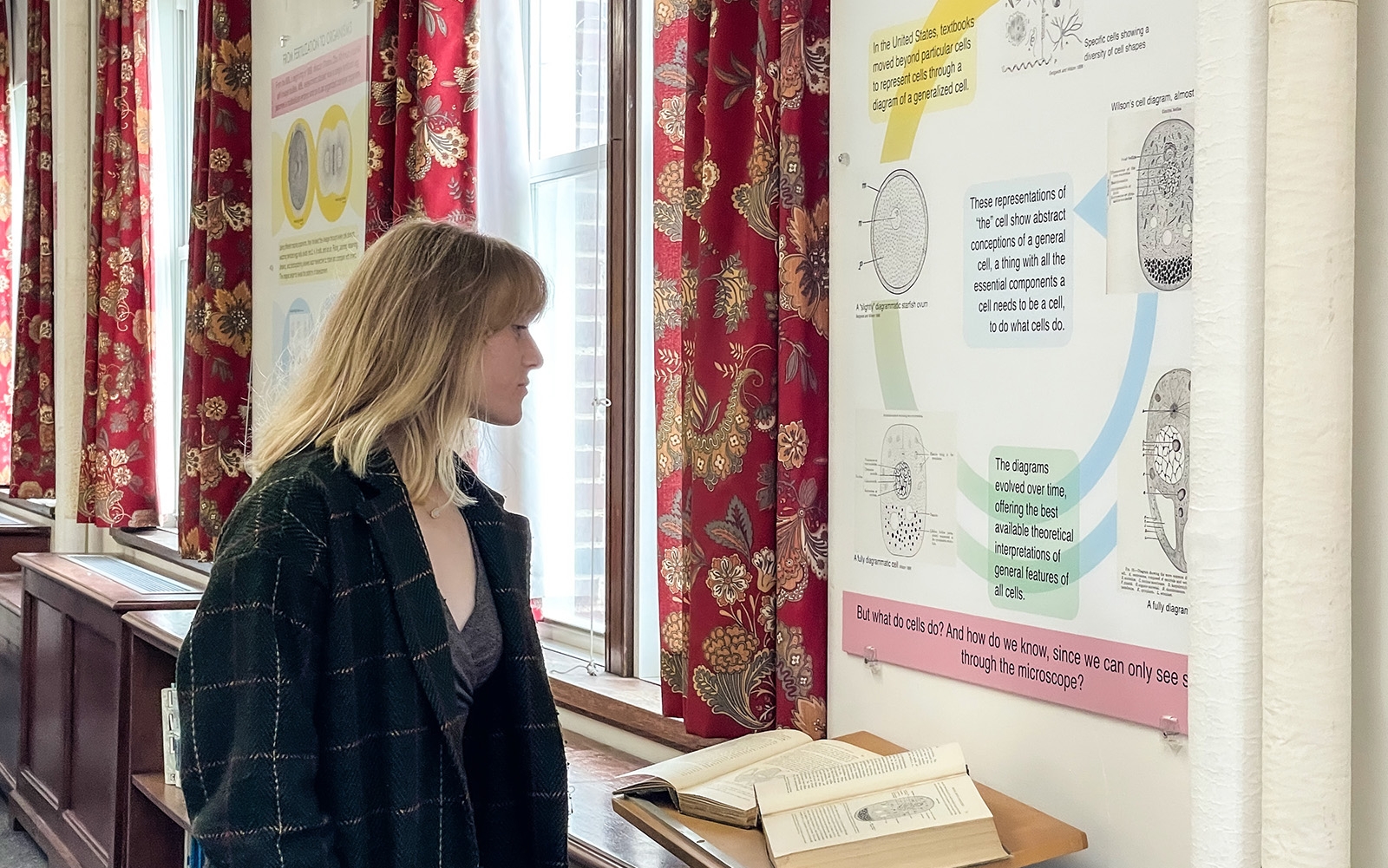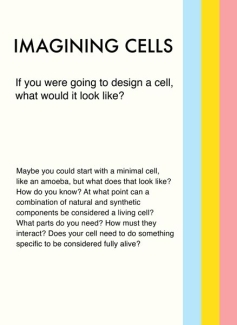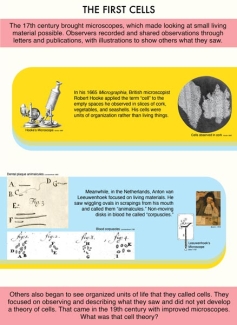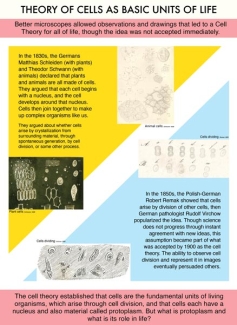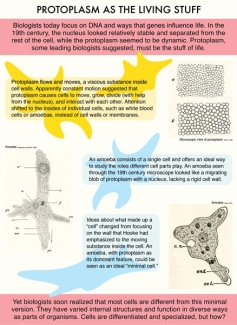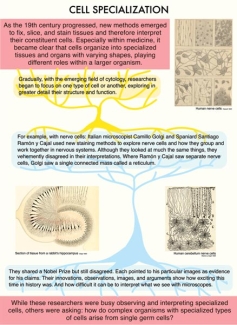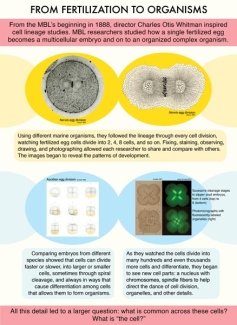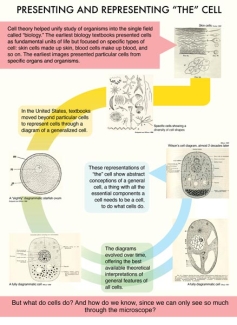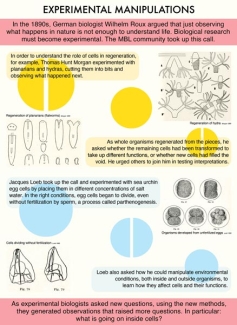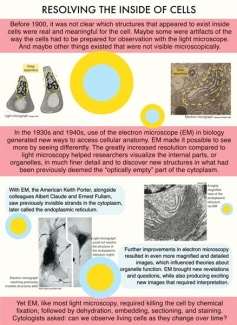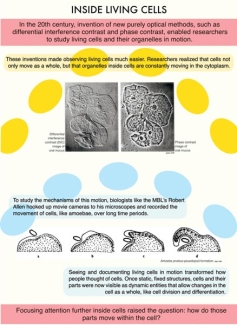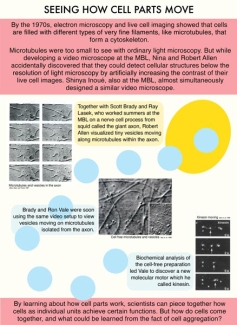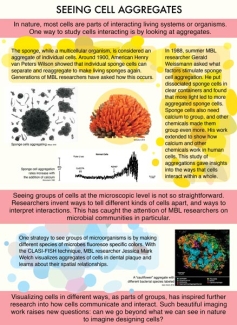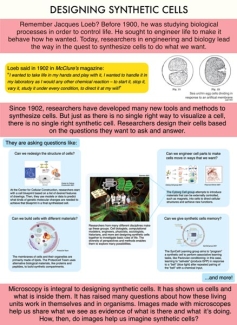Scientists look through microscopes to see living things, then develop theories to interpret and images to represent what they see. From drawings to photomicrographs to videos, cell images can look very different and help researchers learn. Prior knowledge shapes new ideas, those new ideas spur the creation of more images, and so on.
This exhibit offers selected steps in the historical process of seeing, imaging, and even imagining what cells could be and do.
Made possible by generous contributions from the National Science Foundation, Arizona State University, and the MBL.
This project began at an NSF-organized Ideas Lab to stimulate thinking about synthetic cells. They enticed the participants to organize into smaller groups and craft focused projects. Ours became “Cyborg Cells,” with the intention to engineer synthetic cytoskeletons to place in living cells. Hence:“cyborgs.” But what do we know about cells, and whether part-engineered and part-natural cyborgs might even be possible?
What are cells? How do we know? And how do we share what we know? We spent a year studying history of seeing cells, selecting significant episodes in understanding the images made to represent and share knowledge. Traditional histories often describe advances in words, but images give a different insight into the evolution of thinking about cells.
Researchers first observed cells in the 17th century. Research about cells advanced rapidly in the following centuries. Technologies, concepts, and images all work together to shape the history of seeing cells.
The exhibit builds on the more familiar historical understanding of Leeuwenhoek and Hooke to explore examples from the 20th century, many of which are connected with the Marine Biological Laboratory.
Our online exhibit aims to bring the exhibit to a broader audience and to stimulate discussions and reactions. The focus on images allows us to see how science has been presented and has evolved over time. The panel design leads us through history, showing how each set of ideas reflects its context and also raises new questions for exploration. Scientific discovery proceeds through images representing ideas.
